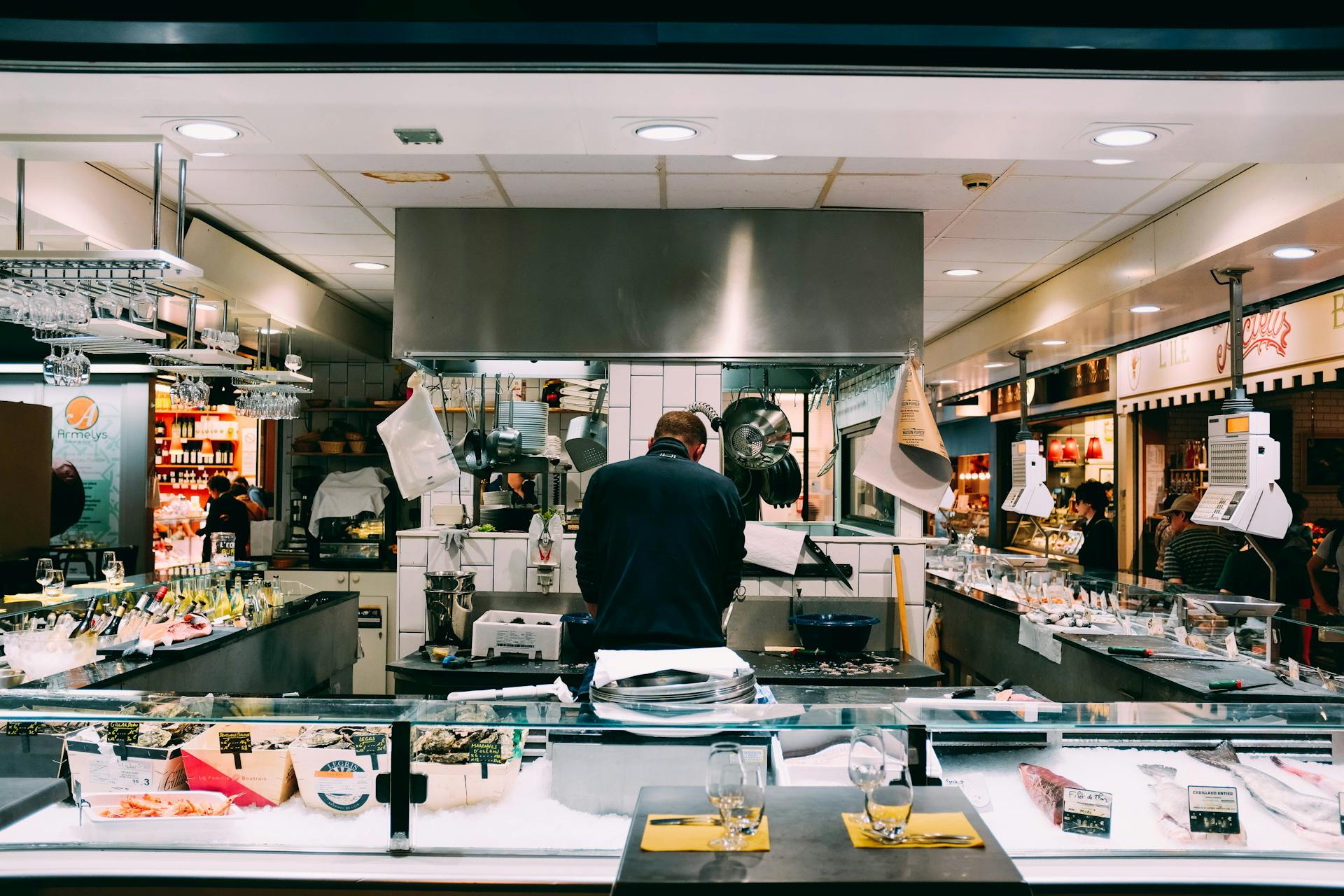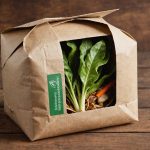Top Strategies for Safely Handling Fresh Produce in Commercial Kitchens
When it comes to handling fresh produce in commercial kitchens, safety and hygiene are paramount to ensure the health and wellbeing of your customers. Here’s a comprehensive guide on the top strategies to keep your kitchen safe and your produce fresh.
Understanding the Risks
Handling fresh produce involves several risks, including contamination from bacteria, viruses, and physical hazards like glass or metal fragments. For instance, fruits and vegetables can be a source of contamination if not properly washed or cooked, as they can harbor pathogens until effectively treated.
This might interest you : Transforming customer service training in upscale dining: key strategies for excellence
Proper Cleaning and Sanitization
Wash, Then Disinfect
The first step in handling fresh produce safely is to ensure that all tools and surfaces are clean and sanitized. This involves a two-step process:
- Wash: Thoroughly wash all tools and surfaces to remove any grease, oil, food residue, and soils.
- Disinfect: Use a U.S. Environmental Protection Agency (EPA)-registered disinfectant, ensuring adequate dwell time to kill any remaining pathogens.
Clean Cloths and Tools
Dish rags and towels used in the kitchen can become highly contaminated quickly. It is crucial to change them frequently and launder them after use. Sponges should be avoided in commercial kitchens as they can hide soiling and become breeding grounds for bacteria.
Also read : Enhancing Multi-Location Restaurant Inventory Management: The Power of IoT Devices
Dry Before Storing
After cleaning and sanitizing tools, wipe them down with a clean cloth and allow them to air dry thoroughly before storing. This prevents bacteria from thriving in damp conditions and reduces the attraction of dust, soils, and contaminants.
Storage and Handling Practices
Organizing Storage Areas
Proper storage is key to maintaining the safety and freshness of fresh produce. Here are some tips:
- Label and Date: Clearly label and date each produce item upon arrival or preparation.
- First In, First Out (FIFO): Arrange produce in a way that allows for easy access to older items, ensuring that the older items are used first.
Temperature Control
Temperature control is critical for preventing bacterial growth. Here are some guidelines:
- Cold Storage: Keep cold foods below 41 degrees Fahrenheit.
- Hot Storage: Keep hot foods above 135 degrees Fahrenheit. Check the temperature every two hours and reheat if necessary.
Prevent Cross Contamination
Cross contamination between raw and cooked foods is a significant risk. Here’s how to prevent it:
- Separate Raw and Cooked Foods: Store raw meat, poultry, and seafood in separate areas from cooked and ready-to-eat foods.
- Use Separate Tools: Use separate cutting boards, knives, and other utensils for raw and cooked foods to avoid cross contamination.
Training and Awareness
Staff Training
Training your staff on food safety practices is essential. Here are some key points to cover:
- Importance of FIFO: Train staff on the importance of using the FIFO method to ensure older items are used before they expire.
- Proper Handling: Teach staff how to properly handle fresh produce, including washing, storing, and preparing it safely.
- Personal Hygiene: Emphasize the importance of personal hygiene, such as washing hands frequently, using gloves when necessary, and keeping hair and beards well-maintained.
Preventing Glass Contamination
Glass contamination can be a serious issue in commercial kitchens. Here’s how to prevent it:
Glass Management Program
Develop a written glass management program that includes:
- Identification and Prevention: Methods for identifying and preventing glass contamination.
- Response to Breakage: Procedures for responding to glass breakage and product contamination.
- Inspection and Verification: Regular inspections and verification to ensure the system is operational and effective.
Immediate Isolation and Cleanup
In the event of glass breakage, immediately isolate the contaminated area and follow these steps:
- Isolate the Area: Identify and isolate the contaminated batch or product.
- Root Cause Analysis: Examine the entire production process to identify the source of the contamination.
- Documentation: Document the incident, including the steps taken to address it.
- Communication: Communicate internally and externally with relevant authorities and consumers.
Practical Tips for Food Handlers
Here are some practical tips for food handlers to ensure safe handling of fresh produce:
Use Gloves and Hair Nets
- Use gloves to prevent germs or bacteria from getting onto the food. Remember, gloves are not a substitute for hand washing.
- Use hair nets or keep hair tied back to prevent hair from falling into food.
Keep Nails Clean and Short
- Keep nails trimmed short and clean to prevent harboring bacteria. Avoid wearing nail polish or fake nails if possible.
Avoid Tasting Food with Fingers or Utensils
- Use a clean spoon or fork to taste food, then dispose of it or wash it thoroughly. Avoid tasting food with fingers or utensils that will be returned to the food.
Maintain Clean Clothes and Personal Items
- Wear clean clothes every day and avoid using dirty or stained aprons or clothing.
- Keep personal items like jackets, bags, and mobile phones away from food preparation areas.
Example of a Comprehensive Cleaning Tool Maintenance Program
Here is an example of what a comprehensive cleaning tool maintenance program might look like:
| Tool | Cleaning Procedure | Frequency | Storage |
|---|---|---|---|
| Cutting Boards | Wash with soap and water, then disinfect | After each use | Dry and store off the ground |
| Knives | Wash with soap and water, then disinfect | After each use | Store in a designated area away from food |
| Mops | Change the mop head frequently, wash and disinfect after each use | Daily | Store in a well-ventilated area |
| Cleaning Carts | Wash and disinfect the cart, including cracks and crevices | Daily | Store off the ground, away from food areas |
| Sponges | Avoid using sponges; use clean cloths instead | – | – |
Quotes from Experts
- “Custodial workers can never be too cautious when it comes to the upkeep of kitchen tools. It’s always better to be safe than sorry, especially when the health consequences of negligence can be severe.”
- “Proper training in handling glass containers, along with adequate time management, can prevent glass contamination issues. Investment in comprehensive training and staffing is essential.”
- “Foster a culture of food safety within your restaurant by emphasizing its importance to all team members. Encourage staff to take responsibility for maintaining high food safety standards and reward their efforts in doing so.”
Handling fresh produce in commercial kitchens requires a multifaceted approach that includes proper cleaning and sanitization, effective storage and handling practices, thorough staff training, and a robust system for preventing contamination. By following these strategies, you can ensure the health and wellbeing of your customers, maintain high food safety standards, and contribute to a positive dining experience.
Remember, food safety is not just about following regulations; it’s about creating a culture of safety and hygiene within your kitchen. By being vigilant and proactive, you can protect your customers from foodborne illnesses and build a reputation for serving safe and delicious meals.












